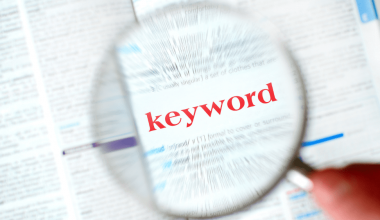It’s crucial to produce advertisements that inspire your customers to take action since different audiences respond to various types of messaging. It’s also essential to consider the values and appeals of your audience. This article will guide you through the techniques of persuasive advertising with an example of how to do it.
What is Persuasive Advertising?
Persuasive advertising is a form of marketing that aims to persuade consumers to buy a product or service by appealing to their needs and aspirations. This persuasion advertising technique aims to present products in a favorable light and persuade consumers of their benefits. Persuasive advertising is motivated by emotional appeals rather than rational arguments.
Marketers use persuasion advertising techniques to build demand for a new product or service or to enhance demand for an existing product or service. Nevertheless, comparative advertising, in which a brand proves its superiority over other brands in the same product category, is a prevalent example of persuasion. Persuasive advertising can also be used to convince the intended audience of a product’s merits. For this purpose, professionals, opinion leaders, and notable celebrities can provide testimonials.
Persuasive advertising techniques belong to three overall categories:
- Ethos: Appeals to ethics, character, and credibility
- Logos: Appeals to reason and logic
- Pathos: Appeals to feelings and emotions
Persuasive Advertising Techniques:
Consider the following persuasive advertising techniques:
#1.The Carrot and the Stick
The carrot and stick strategy is based on the notion that the majority of people prefer pleasure to pain. Also, centered advertising stresses a product’s benefits, luring people and instilling optimism. A stick-focused commercial frequently concentrates on the negative elements of something, prompting feelings of dread or the possibility of loss.
Both strategies can engage prospects in a narrative and elicit the emotions necessary to motivate the desired action. Similar to a product’s benefit, carrots encourage individuals to do the desired activity. On the other hand, sticks, such as anti-smoking campaigns, induce fear in individuals so that they cease a certain action and begin the alternative.
An example of this persuasive advertising technique is the carrot: Increase your chances of discovering your ideal match by 50%.
#2. The Principle of Scarcity
The scarcity principle is based on a person’s desire to own something one-of-a-kind. This appeals to customers who appreciate unique items and experiences. The scarcity principle This frequently works because people want something that others cannot have, especially if this emotion boosts one’s sense of power or self-worth. Using terms like “restricted availability” or “exclusive offer” to generate perceived scarcity in order to promote demand is one example of a persuasive advertising method.
#3. One Message Per Advertisement
Stick to one statement to immediately hook viewers and urge them to read or watch the rest of your campaign. Highlighting the main benefit or feature of your product or offer will make it easier for your customers to understand its value and increase the likelihood of their conversion because you’re only conveying one message to your audience: your product’s main feature will benefit your customer’s life in some way. An example of this persuasive advertising technique: make the switch to Douglas Insurance and you’ll get a discount of 20%.
#4. Second-Person Writing
Writing advertisements in the second person can instantly grab their attention and help them visualize a future with your product or service improving their lives. This is because your prospects are primarily interested in how you can help them, and pronouns like “you” and “you’re” can engage them on a personal level and help them insert themselves into the narrative you’re creating.
#5. The Audience Feels in Control
Giving your audience a sense of control can help ensure that they won’t feel compelled to acquire your goods. Consequently, this gives customers the impression that they have a choice in what they choose to purchase. Using expressions like “Feel free” or “No pressure” is also a way to do this. An example of this persuasive advertising technique: Learn why residents adore our pest control services by scheduling a no-obligation consultation and free quote.
#6. Call-To-Value
This method substitutes a call-to-value for a call-to-action in the ad copy. Hence, consumers may clearly understand from the ads how valuable your product is. This enables them to picture the advantages of buying what you’re selling. An example of this persuasive advertising technique: joining our fitness center today will make you stronger tomorrow.
#7. Bandwagon Appeal
By using the “bandwagon appeal” strategy, you can convince customers that they are losing out if they don’t buy your product. Due to its popularity, it motivates customers to buy your service or product. This strategy plays on our need to fit in.
#8. Celeb Testimonials or Associations
A celebrity endorsement or affiliation seeks to give your product more credibility. It might give your product a more opulent or appealing appearance. Additionally, this strategy could encourage followers of the celebrity to buy the item out of a desire to imitate them.
#9. Emotional Appeal
Using emotional appeals, marketers want to influence audience feelings and behavior. Any emotion, including joy, sorrow, excitement, or terror, may be elicited by these ads. This tactic aims to divert customers’ attention from reason so they will act solely on emotion.
#10. Humor
The humor strategy seeks to elicit laughter from viewers. Therefore, it encourages the audience to think favorably of the product. It could contain very little information on the product and sketches, cartoons, or other artwork with a comedic undertone.
#11. Appeal Against Bandwagons
The anti-bandwagon appeal strategy plays on people’s desire to stand apart from the crowd. Therefore, this can suggest the product as a means for customers to embrace their uniqueness and show their own sense of flair. It fosters the notion that buying these goods goes against the grain of what people typically do, say, or purchase.
#12. Slogan
Slogans are a common tool in advertising. A company’s slogan is a catchphrase or expression it uses in its advertising. Moreover, Businesses frequently recite their slogans in the hopes that customers will remember them. This strategy hopes that customers will remember slogans and also, be motivated by them to believe in what the business is offering.
Persuasive Advertising Example
Promotions by Colgate and Sensodyne often use dentists to protect the products being recommended by experts. Cement companies also advertise using testimony by an engineer about the strength of the cement and his trust in it as a model of persuasive advertising.
#1. Heinz Ketchup ads
Heinz Ketchup Co. made Ed Sheeran their biggest lover of Heinz Ketchup in advertising their product. However, this commercial is part of Heinz’s UK ketchup ad campaign, which is seeking to make the condiment as popular in the UK as it is in the US. The reason for its success is that Sheeran’s charm shines through in his performance and in his narration of the commercial. Rather than a commercial, it feels like you’re watching a movie. The “posh” meals and sauces, he argues, are nothing without his Heinz-based bag.
How to do it?
Having a fan-like Ed Sheeran should be enough to ensure your brand’s success. However, dealing with influencers may be a better option if your celebrity clientele isn’t as large. For social media stars, persuasive commercials are often right on-brand.
Finding a more specialized influencer for your campaign, however, using this method, will be able to target a specific group of potential customers at a lower cost.
#2. Google ads
Google’s “The Most Searched” commercial for Black History Month last year was both educational and motivating. Clips of well-known African-Americans were aired with captions reading “most searched,” also, indicating that the people and events represented had shaped history.
The Benefits of Persuasive Advertising
Here are a few benefits of compelling advertising:
#1. It Focuses on a User-Centric Approach.
Persuasive advertising focuses on meeting the needs of the consumer. Therefore, these tactics frequently generate appeals that provide consumers with highly personalized rewards. This advertising frequently uses “you” terminology to attract and engage customers.
#2. Creates Credibility
Persuasive advertising persuades a person to buy your product or service based on their emotions rather than facts. These tactics enable you to build credibility through well-crafted arguments. These arguments persuade people to trust you and take action.
#3. It also Increases Brand Loyalty.
Through emotional appeals, persuasive advertising persuades consumers to buy a product. However, consumers make purchasing decisions based on how commercials make them feel. Persuasive advertising frequently establishes a relationship or connection between the buyer and the brand.
What are the persuasive techniques of advertising?
The three types of argumentation can be summed up as follows: An appeal to the audience based on the speaker’s morals or personality is known as ethos. Pathos appeals to the emotions of the viewer. invokes the audience’s sense of logic by supporting an argument with verifiable facts.
What are some examples of persuasion?
Newspaper columns and advertisements provide effective persuasive texts. Although there are different ways to write effectively, most persuasive papers have a main argument, supporting details, and a summary at the end.
What is persuasive vs informative advertising?
The primary distinctions between these advertising strategies pertain to the informational goals of each. In contrast to persuasive advertising, which aims to complete sales by appealing to customer emotion, informative advertising employs compelling strategies but places a greater emphasis on facts.
What are the six common persuasive techniques?
Reciprocity, scarcity, authority, commitment and consistency, like, and consensus are among Cialdini’s six principles of persuasion. You can utilize these guidelines to convince and sway others if you are aware of them.
What are the goals of persuasion advertisement?
Advertising that appeals to the needs and desires of consumers in order to sell a good or service is known as persuasive advertising. It suggests use a variety of techniques to explain a product’s advantages and persuade customers to purchase it.
Conclusion
Persuasive advertising techniques definitely focus on different aspects of persuasion but aim to achieve a goal by convincing your audience to take the desired action. So whether you pursue one advertising technique or another, remember that if you can trigger an emotional response, regardless of the stimuli, your ads will be a success.
Persuasive Advertising FAQs
What is persuasive and informative advertising?
Informative advertising employs persuasive strategies but is more focused on facts, whereas persuasive advertising attempts to elicit consumer emotion in order to complete the sale.
Why is persuasion important in advertising?
Persuasion skills are essential because they enable marketing professionals to change the preconceived beliefs of their potential clients and persuade them to believe in them.
What is an example of informative advertising?
A smartphone update is a common example of this type of informational advertising. A typical advertisement may include information about the phone’s operating system.
Related Articles
- Hot new business ideas 2023 with 100% success rate. Find 10 of them here (+ all you need)
- Promotion Mix: Definition, Types, Importance, & Strategies
- Management Styles: Different Management Types Explained!
- Management Styles: Different Management Types Explained!
- Push Strategy: Marketing Practices & Comparisons (+Free Tips)
- TAX ATTORNEY: When Do You Need a Tax Lawyer (+ Salary Structure)
- BARGAINING POWER OF SUPPLIERS: What It Is & How It Works






